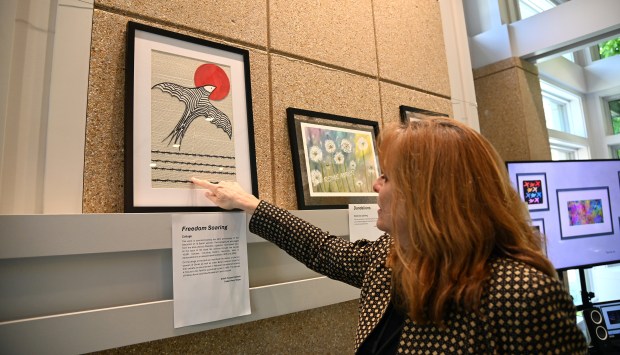One year ago last June, the Baha’i International community launched a campaign entitled Our Story Is One in recognition of four decades since the execution of 10 Baha’i women in Shiraz, Iran on June 18, 1983.
Through June 29, the Baha’i House of Worship in Wilmette is hosting the Our Story Is One Art Exhibit.
The exhibit launched May 22 and is open to the public daily from 10 a.m. to 6 p.m. in the Baha’i House of Worship’s Welcome Center at 100 Linden Avenue. The Baha’i House of Worship’s Welcome Center is accessible to motorists by a visitors parking lot off Linden Avenue to the west of the building.
An opening reception with representatives from the Baha’is of the United States was held on Sunday, May 26.
The 1983 story of the 10 Baha’i women murders drew global headlines.
Program Coordinator at the Baha’i House of Worship Ellen Price told Pioneer Press she remembers hearing about the women who were killed.
“Many Baha’is were killed,” Price said. “Because they were 10 women, and many of them very young, it kind of stood out as a sign of just how horrible things were in Iran.”
After months of torture and imprisonment, the women were taken in the night and hanged without the knowledge of their families. Most of the women were in their 20s and the youngest was 17. A mother and daughter were among victims.
“Their sole crime was their belief in the Baha’i faith, which promotes gender equality, something that is absent and criminalized in Iran,” according to the U.S. Baha’i Office of Public Affairs.
The Our Story Is One Art Exhibit features artists from around the United States in a display that includes tapestries, quilting, stained glass and paintings. A digital display offers more art submissions plus music and a film short.
The exhibit is placed at the front entrance inside the Welcome Center. Visitors will encounter a display featuring a description of #OurStoryIsOne with portraits of the women.
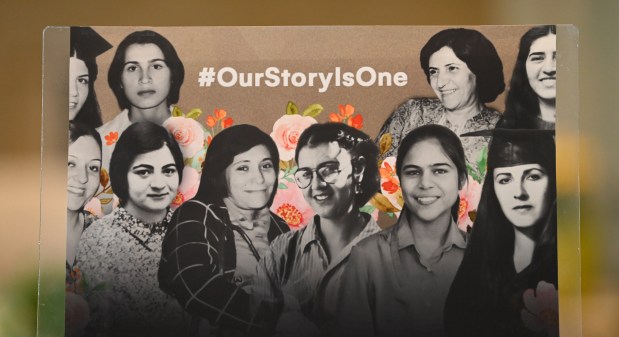
The 10 Bahai women were coerced into renouncing their faith but none did, according to signage.
“This event is a significant chapter in the broader narrative of Iranian women’s ongoing struggle for equality and justice,” also according to signage. “Through art, we aim to honor their memory and highlight the ongoing fight for a just and equal society in Iran and beyond.”
Price joined the faith in 1986 and recalled a story from around the time she converted.
“I was a new Baha’i and I was learning all these different things and I met someone just through my everyday activities who was Iranian,” Price said, “and, ‘Oh, you’re an Iranian, how wonderful,’ and it was a young man and I said, ‘I’m a Baha’i,’ and he said, ‘Oh, in my country, we kill Baha’is.’
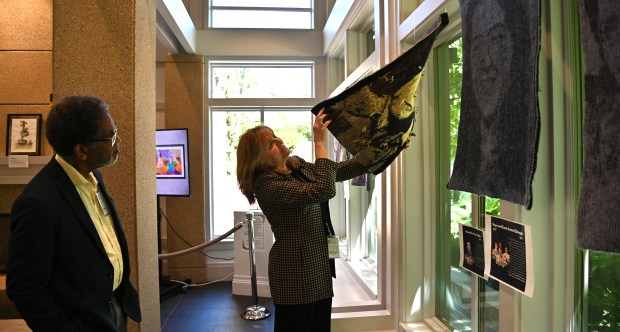
“I’ve never had that experience before,” Price said. “It just broke my heart. It just brought it right home to me the fact that this is what’s happening. It’s still happening.”
There are eight million people in the world of the Baha’i faith with an estimated 1,500 in the Chicago area.
Director at the Baha’i House of Worship George Davis said persecution of the Baha’i community in Iran occurred in the mid 1850s.
“This has been a very systematic campaign really to put as much pressure on the Baha’is as possible to recant their faith or to leave,” Davis said. “The Baha’i faith, having begun in Iran, has always been looked at as really an outlier, as an existential threat.”
During the Islamic Revolution of 1979, Davis said the current Islamic government felt Baha’is had gained too much status and recognition. This, he said, interfered with the government’s plans to create its version of the Islamic state and lead to a “campaign of elimination.”

Among art pieces in the exhibit are handwoven tapestries of portraits of the murdered women. The “Behind the Veil” 10 tapestries were made by artist Ann Booth of Baltimore, Maryland.

Art pieces include “Phoenix in Chains,” an acrylic painting by artist Liam Montgomery of Oroville, California; the framed collage “Freedom Soaring” by artist Susan Hansen of Cedar Park, Texas; the quilt “Hearts Soar” by artist Joan Faella Haskell of Hyannis, Massachusetts and the circular stained glass art piece called “Lovers Of His Light” by artist Sharon McCord of Coconut Creek, Florida.
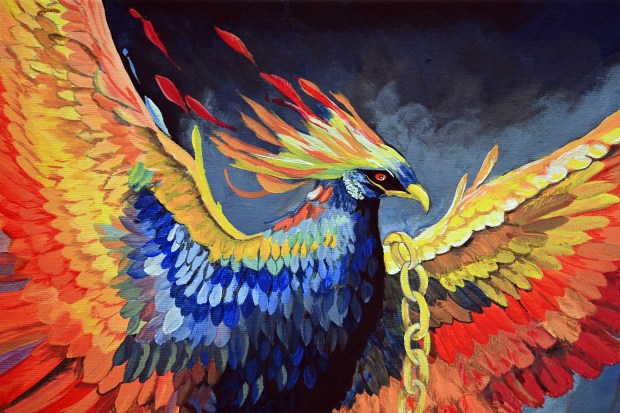
“Baha’is are very optimistic that the kind of world in which people are really truly able to act and be treated as one human family will prevail,” Davis said. “But the question is, how much suffering will we put ourselves through until that realization is universal? Because that’s the only way forward.”
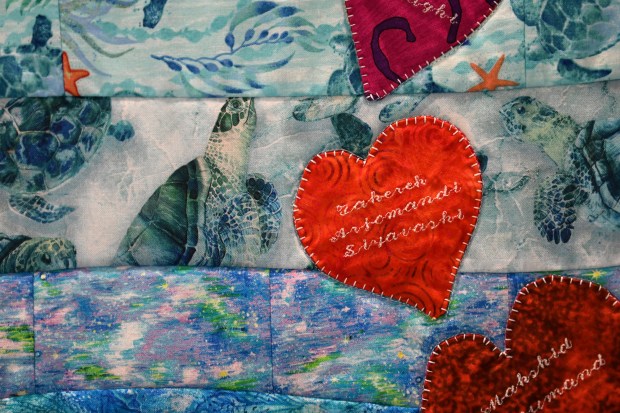
On the last day of the #OurStoryIsOne art exhibit on June 29, all are welcome at a free concert at 7 p.m. in the lower level of the House of Worship. No tickets are required.
Irish singer-songwriter, Luke Slott, has been traveling around the world to raise awareness of the #OurStoryIsOne campaign by presenting an evening of songs and stories of heroic Iranian women and men, past and present.
Karie Angell Luc is a freelance reporter with Pioneer Press.


